Start 14-Day Trial Subscription
*No credit card required
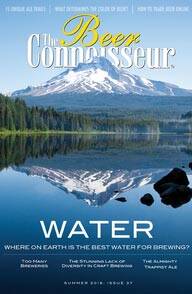
50 Impactful Stories from 50 Issues of The Beer Connoisseur
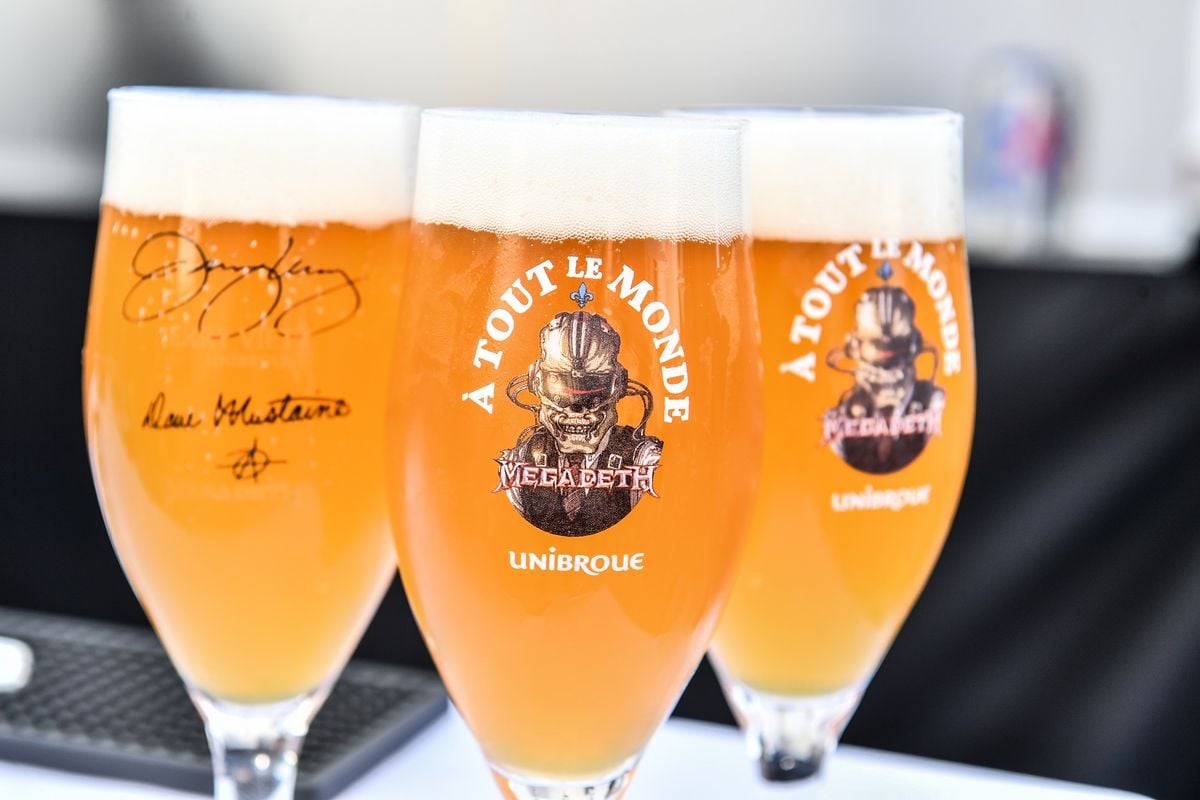
Real Ale In Rock & Metal
by Jim Dykstra
Rock music has been associated with excess since its inception. Along with its companion activities, sex and drugs, the genre’s hallmark characteristics have been about going big, bold, and beyond societal expectations. But it’s made to be enjoyed by all, and much of it takes considerable technical ability, often discernable only to the trained ear.
In many ways, American craft beer has followed a similar trajectory. Bucking the trend of the mass-produced lager, brewers began to question what they valued in a beer, and what it means to drink one. The result has been a revolution of significant cultural impact that is still unfolding, both an expansion and liberation of tastes.
No one wants a soulless product shoved down their throats. People crave authenticity, and they thirst for what truly speaks to them. Enter the artists to give voice to those who have not been heard, and to reanimate an integral part of life that has been bastardized and commoditized by those who value the dollar above all. Are we talking about brewers or musicians now? Are they really any different?... CONTINUE READING
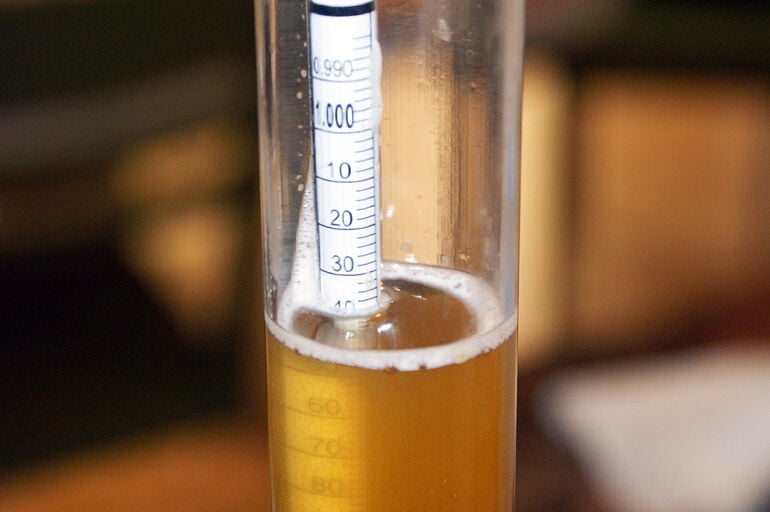
What Is Original Gravity?
by Jim Dykstra
As Mythbusters' ballistics expert, Adam Savage, has said: "Remember kids, the only difference between screwing around and science is writing it down." During the brew day, one of the most important things to write down and one of the very last things to write down is Original Gravity. Original Gravity dictates whether the desired ABV will be achieved in a brew. It dictates whether the hop additions will provide the desired balance. It determines whether or not the brew day went as planned. Ultimately, it's a measure of how well the brewer knows their brewery.
Gravity is a key measure in physics and petroleum as well as brewing and winemaking. In physics gravity is the force bringing objects together. In the contexts of petroleum and fermentation, gravity is the measure of a liquid's density relative to water at a specified temperature. Within brewing and winemaking, the difference in density is a result of dissolved, fermentable sugars. Each increment (1/1000th) on the specific gravity scale represents a .1 percent increase in density - a 1.100 specific reading indicates a wort that is 10 percent denser than water. Most 5 percent ABV beers have an original gravity around 1.050. Bigger beers like American Barleywines and Imperial Stouts can surpass 1.100 with smaller beers like an American Light Lager or Berliner Weisse rarely exceed 1.030... CONTINUE READING
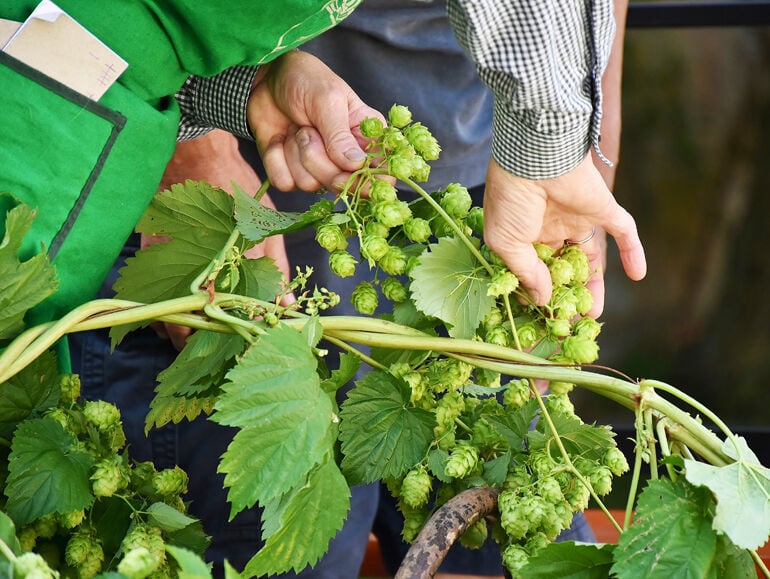
How Are Hops Grown and Harvested?
by Brian Yaeger
Beer lovers know that hops are the most important element of any good brew, but how are hops grown and harvested? Let's delve into a hop harvest in the Willamette Valley to provide the answer.
The Harvest
Third-generation hop farmer Gayle Goschie can finally rest. The harvest is over. The Crystal Zwickle pale ale from Central Oregon’s Crux Fermentation Project tastes of freshly zested oranges and fresh-cut wood, which is to say it tastes amazing and vibrant. That’s because the Crystal hops used in its making were still growing at Goschie Farms in Silverton, Oregon the very morning the beer was brewed... CONTINUE READING
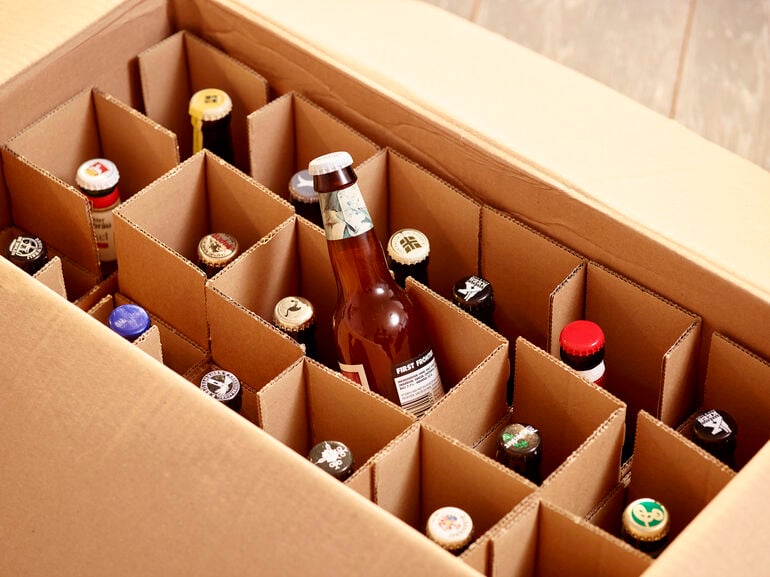
Beer Shipping Laws Deconstructed
by Bob Barnes
Beer shipping laws are inscrutable at best and completely opaque at worst. Why are they so confusing? We hope to clear up some misconceptions in this piece.
With the passage of the 21st Amendment in 1933 ending Prohibition, states (and in some cases, municipalities and counties) were given absolute power to enact their own laws regarding the production, distribution and sale of alcohol. It’s common knowledge that alcohol is highly regulated through every phase of its production, and its marketing and distribution must comply with a host of rules and regulations regarding how businesses can distribute their products – including how they are shipped.
Shipping Beer Between States
While all states allow the production of beer, the laws surrounding the shipment of alcohol vary from state-to-state. A handful of states allow shipments into and out of the state, while some only permit shipments from breweries within the state. Others restrict sending beer from breweries in-state but allow beers to be sent out of state, and still more only allow shipments sent out of state. There is little to no consistency on these states’ decisions, and requirements are often vague, convoluted and unclear... CONTINUE READING
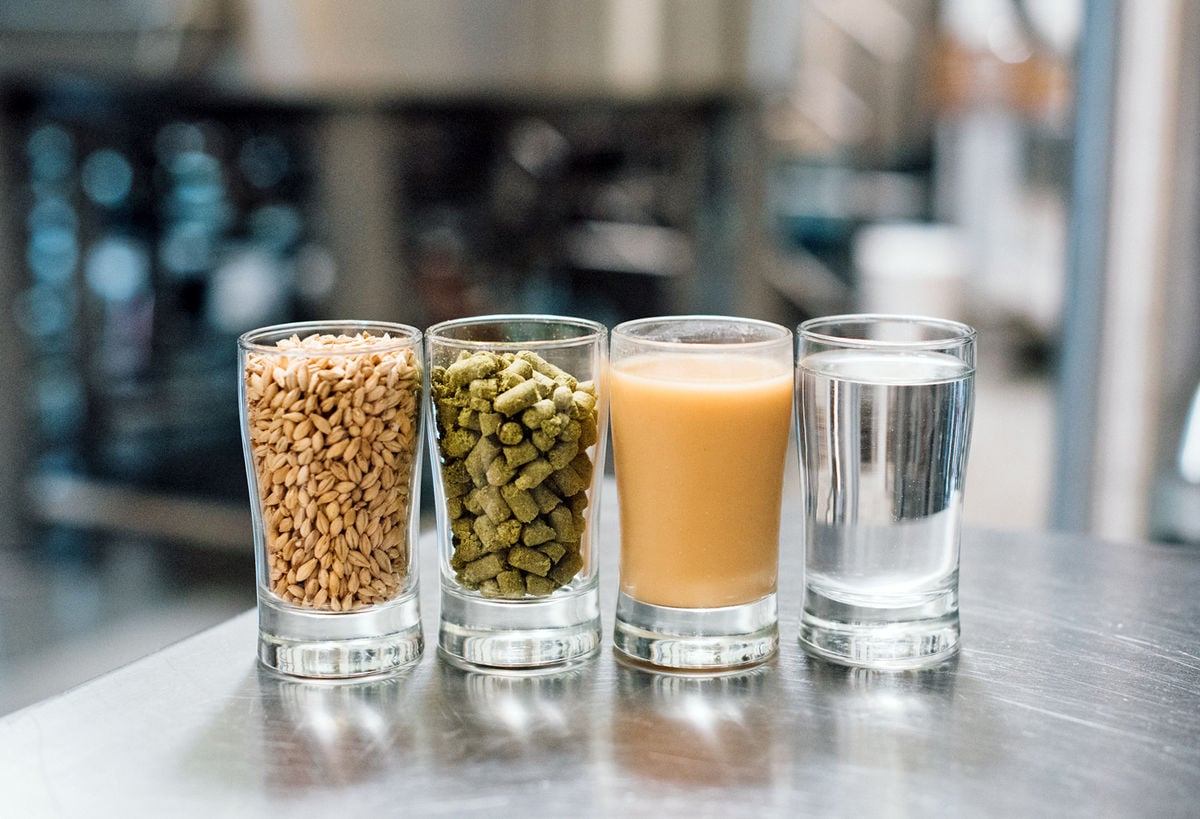
The Chemistry of Hops and Beer
by Bob Barnes
With IPA as the leading craft beer style in America, even casual craft beer drinkers are aware that hops provide the bitter flavor in their favorite beers. But the way that hops are selected and their flavors and aromas are extracted is less well-known – more the territory of “mad chemist” brewers, who must draw on a knowledge of biology, chemistry and math to craft the next big thing. In fact, the ever-evolving chemistry between hops and beer is one of the most fascinating and intricate aspects of the craft beer universe. Here's an in-depth look at the science behind hops as well as how four popular hop varietals affect the flavor, aroma and other characteristics of beer.
THE BASICS
Hops are the cone-shaped female flower of the vine-like plant humulus lupulus, and the important ingredients are concentrated in the cone’s lupulin glands. Hops are harvested, then dried and processed into pellets, plugs, extracts, or left in their cone form... CONTINUE READING
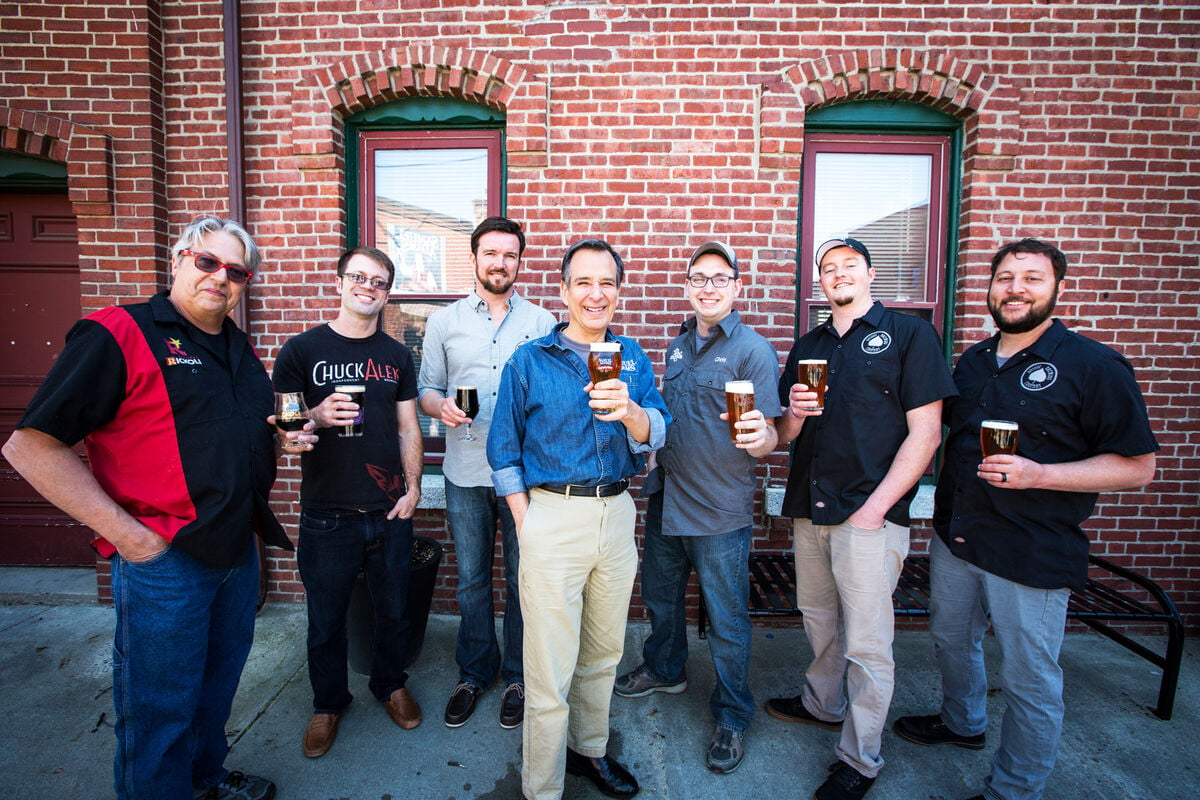
Jim Koch on 10 Years of Brewing the American Dream
by Jim Dykstra
In the past few decades, few industries have epitomized the spirit of American entrepreneurialism like craft brewing. In times of recession, brewing kept booming, serving as an avenue for upward mobility in a stagnant economy. Stories of successful brewers who started in the garage or basement and ended up on the public stock exchange read like working-class fables. Such is the case for The Boston Beer Co. (BBC) founder and original Sam Adams brewer Jim Koch, a sixth-generation brewer who launched what would become one of the most iconic craft brewing operations of all time in 1984 from a kitchen stove pot.
Unlike the relatively craft-conscious world of today, Koch brought Samuel Adams Boston Lager into a market that viewed "craft" as a term for macaroni pictures held together with Elmer's Glue.
In some ways, building up The Boston Beer Co. resembled such a craft project. Koch had to piece together accounts one by one, bar to bar. How well his product would "stick" depended on consumer education – sharing the humble origins of Boston Lager, a 4.2 percent ABV Vienna-style lager based on great-great grandfather Louis Koch's family recipe... CONTINUE READING
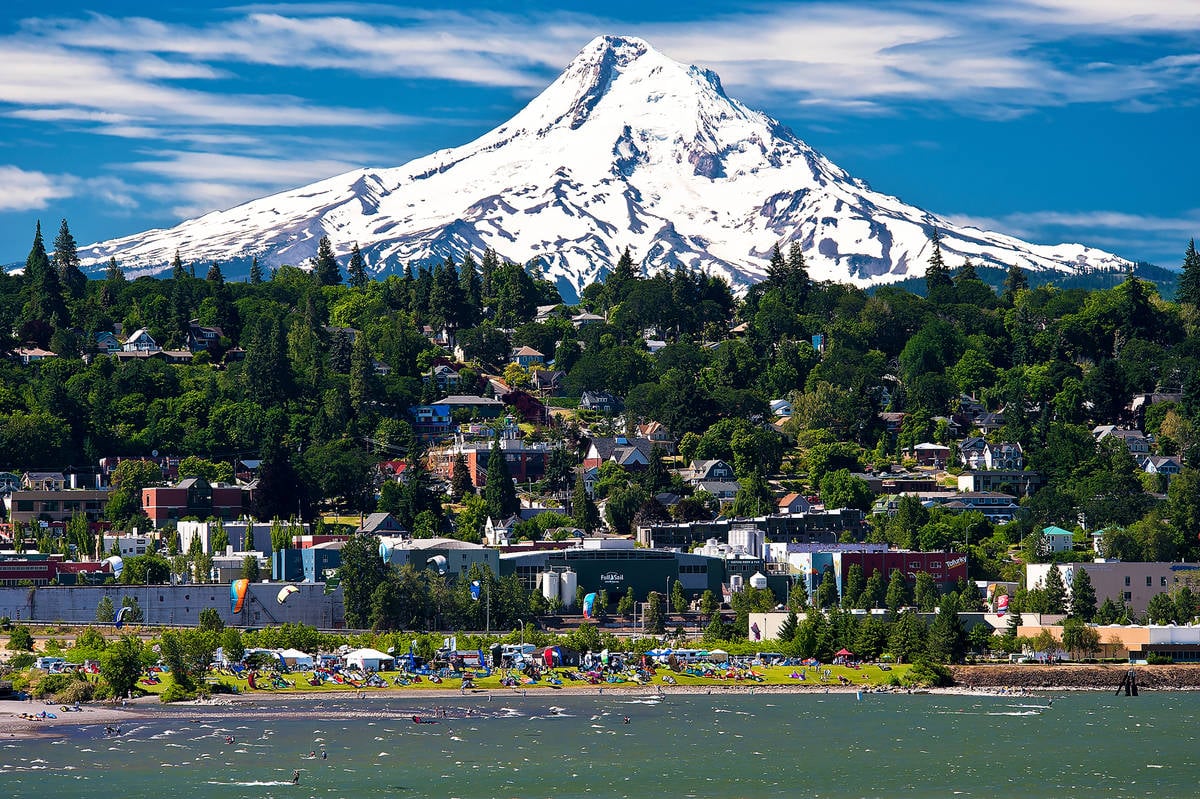
Where on Earth is the Best Water for Brewing?
by Tiffany Koebel
Hops and yeast are the two ingredients that often get the most attention in craft beer culture today, but water can also impact a beer’s flavor, appearance, aroma and mouthfeel. After all, it makes up about 90 percent of beer! So where on Earth is the best water for brewing? That’s a good question for a beer connoisseur to ask, but turns out it’s the wrong one.
Historically, water profiles in eight European cities were key to the rise of dramatically different beer styles because certain elements in those cities’ water supplies interacted with the other ingredients in beer (malt, hops and yeast) in specific ways. While most brewers now treat their water – and any style can be brewed anywhere – different types of water are ideal for particular styles. This article will focus on the effect that water has on brewing as well as where to find the best water for brewing different styles around the world... CONTINUE READING
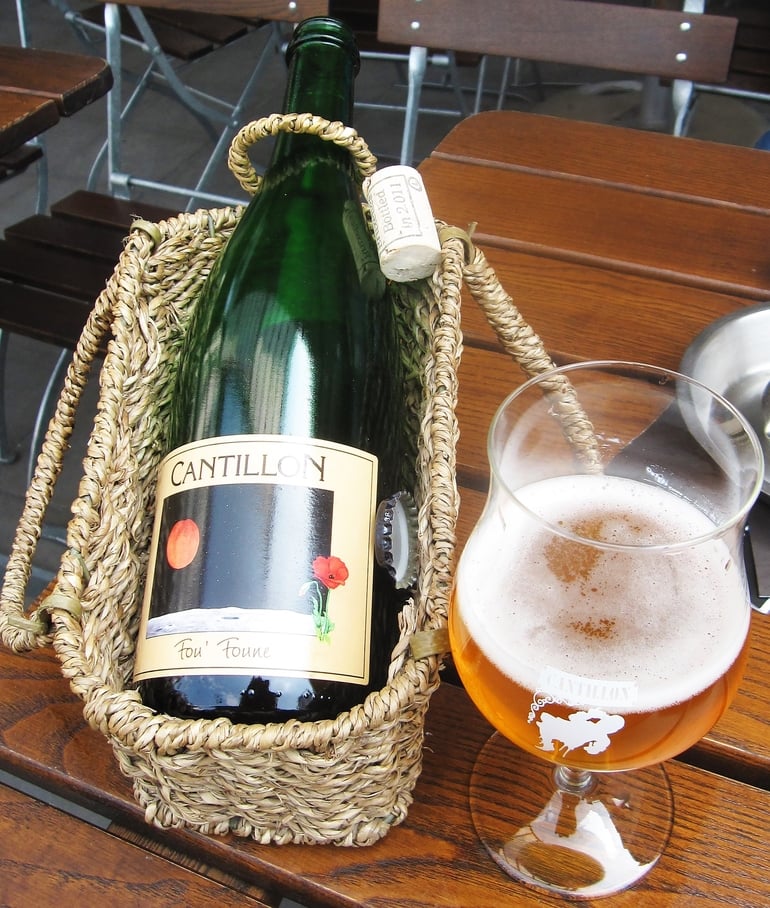
The Lambic Basket
by Bryan Richards
Much like the vineyards of Bordeaux and the peat-covered terrain of Islay carry centuries-old wine and scotch traditions, the region surrounding the Senne River in Belgium is steeped with one of the oldest beer traditions in the world: lambics. Until the past couple of decades, lambics were drowned out by the mystique of Belgian Trappist ales. Thanks to the global craft beer movement’s interest in sour beers, the once dying style – along with its singular storage container, the lambic basket – has not only been rejuvenated in its homeland of Brussels but replicated the world over.
“The style almost died at the end of the 1990s,” says Luc De Raedemaeker, director of the Brussels Beer Challenge and chief editor of Bière/Bier Grand Cru. “Now it’s quite popular again.”
Both brewers and beer servers have sought to maintain the traditional methods of brewing the style: an ale brewed from unmalted wheat, malted barley and aged hops that’s spontaneously fermented via open air vats called coolships and aged on wood for up to three years. They also have kept alive the practice of serving the style in its traditional, distinctive basket... CONTINUE READING
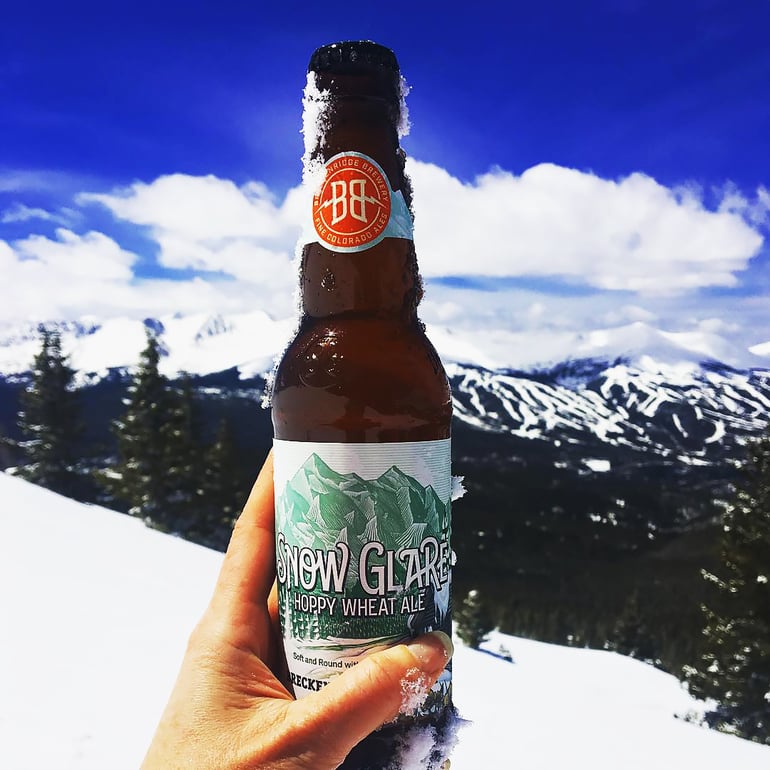
Top US Skiing Destinations for Beer Lovers
by Kristen Kuchar
Outdoor adventures and craft beer are a perfect duo. We love to crack open a beer after our hike or ride or whatever other activity we’ve enjoyed to celebrate with our companions and commemorate just how awesome it was. Skiing is no different. While skiing and craft beer don’t mix in a literal sense (i.e. don’t drink and ski), these U.S. skiing destinations feature craft brews that serve as a perfect accompaniment to a long day on the slopes. Whether you’re an expert skier or have never put on a set of skis, here are the top U.S. skiing destinations perfect for beer lovers... CONTINUE READING
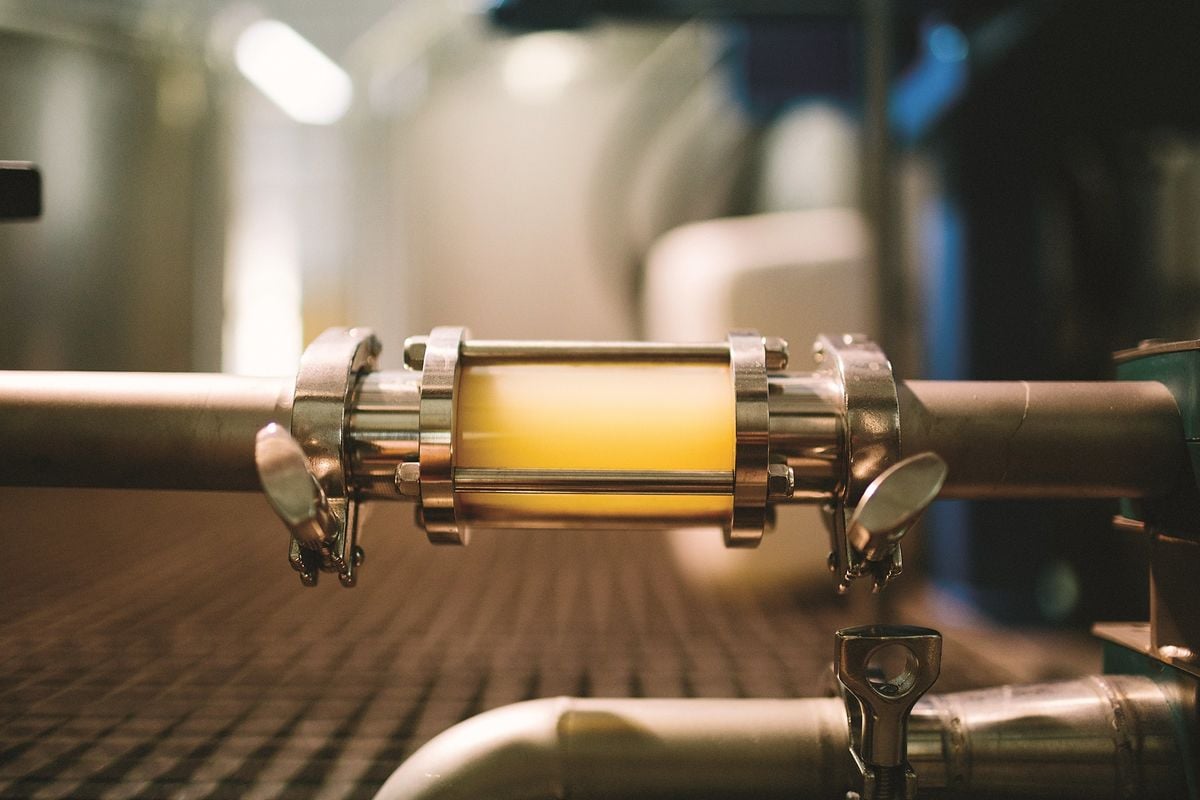
Top Emerging Beer Styles for 2019
by Josh Weikert
So much beer, so little time. It almost makes one nostalgic for the days when there were only a handful of craft breweries and even fewer that engaged in wide distribution. “Keeping up” with the beer scene was pathetically simple, but nowadays we face the challenge of not only keeping up with an exponentially larger number of breweries but also a growing number of categories, styles, and renditions of beers. It’s in that spirit that we take a moment to think about the top emerging beer styles to seek out in 2019.
Some are already firmly established in the minds of craft beer lovers even if they aren’t yet widely available in the marketplace, while others are lurking quietly in the shadows and sporting alien-sounding names. They represent new styles, rediscovered styles, augmented and enhanced styles – and even a return to the most basic styles. Craft beer is anything but static, and keeping up can be exhausting, but it is definitely worth the effort... CONTINUE READING
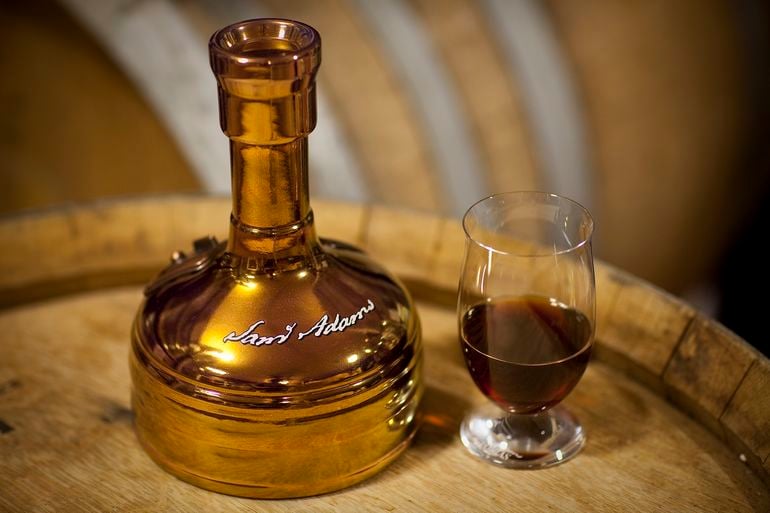
The History of Samuel Adams Utopias
by Jay Brooks
Every sip of the unique beer Samuel Adams Utopias is quite literally a step back in time, into history. You’re not just tasting the beer that The Boston Beer Company made last month, or the one that’s been aging in a barrel for six months or even a year. Every bottle of Utopias contains a portion of every Utopias edition that came before it, and that means going all the way back to 1992’s Samuel Adams Triple Bock, the progenitor of today’s Utopias.
The story of Samuel Adams Utopias starts a little further back than 1992. While Samuel Adams’ popular Boston Lager was the first beer created by Jim Koch and The Boston Beer Co., their second beer was Samuel Adams Double Bock, which was first brewed in 1989 as their first seasonal offering and for many years was released each spring. At over 9 percent ABV, and a lager, it was for the time, a very unusual choice, but was quite successful nonetheless. It helped that it was delicious, and bocks have a long-standing history in the spring... CONTINUE READING
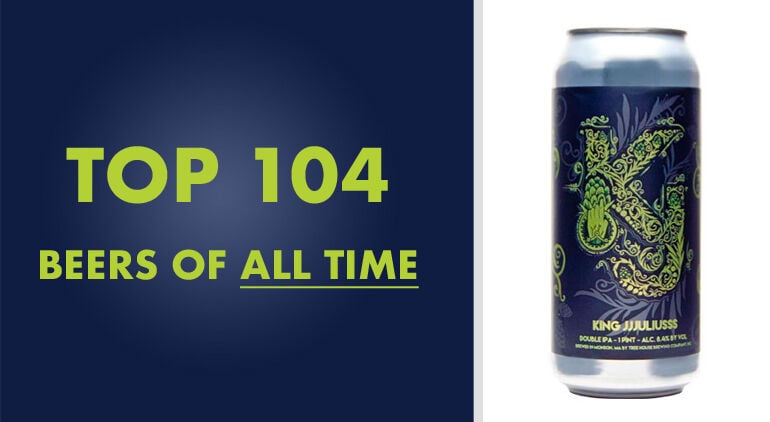
Top 104 Beers of All Time
by Editorial Dept.
With the thousands of beers that are imbibed on a daily basis around the world, let’s take a look at the best beers that have ever been reviewed by The Beer Connoisseur in our Top 104 Beers of All Time.
Beer – it’s just the best, isn’t it? Here at The Beer Connoisseur, we certainly think so, and we hope that we convey that affection we have for the greatest beverage of all time to you on a daily basis.
Our Official Review features all of the beers that we have ever had the privilege to judge, and over the years, our judges have bestowed World Class ratings of 96 or above to upwards of 100 beers... CONTINUE READING
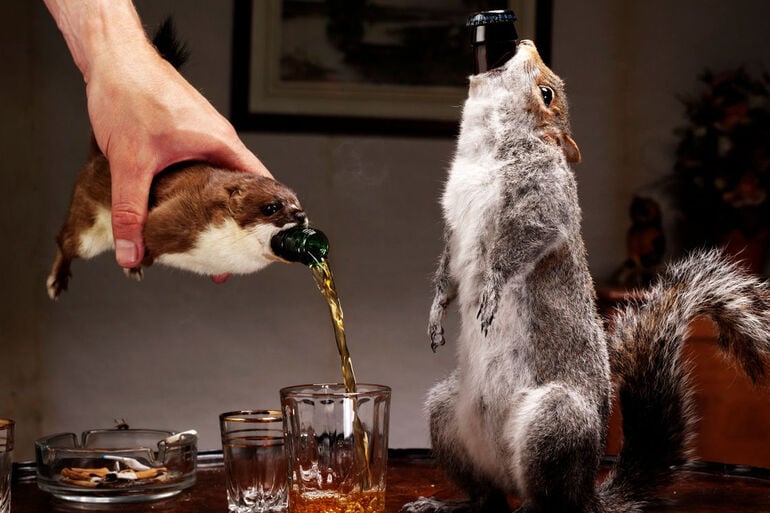
The World's 15 Rarest Beers for Collectors
by KC Morgan
Sure, everyone’s tasted those beers that you can get anywhere, the ones that are always on tap, and you’ve probably tried some seasonal favorites that only come around a few times a year from your favorite craft breweries. But the serious collectors know that there are extremely rare beers out there in the world, beers that come only once in a blue moon -- so to speak. Some are so hard to come by, in fact, that you have to travel to a remote monastery or well-hidden brewery just to get a taste. Read on to explore the 15 rarest beers for collectors.
For collectors, these beers are like the Holy Grail. Sipping them won’t grant you eternal life, but it is something of a miracle if you manage to get a bottle of your own... CONTINUE READING
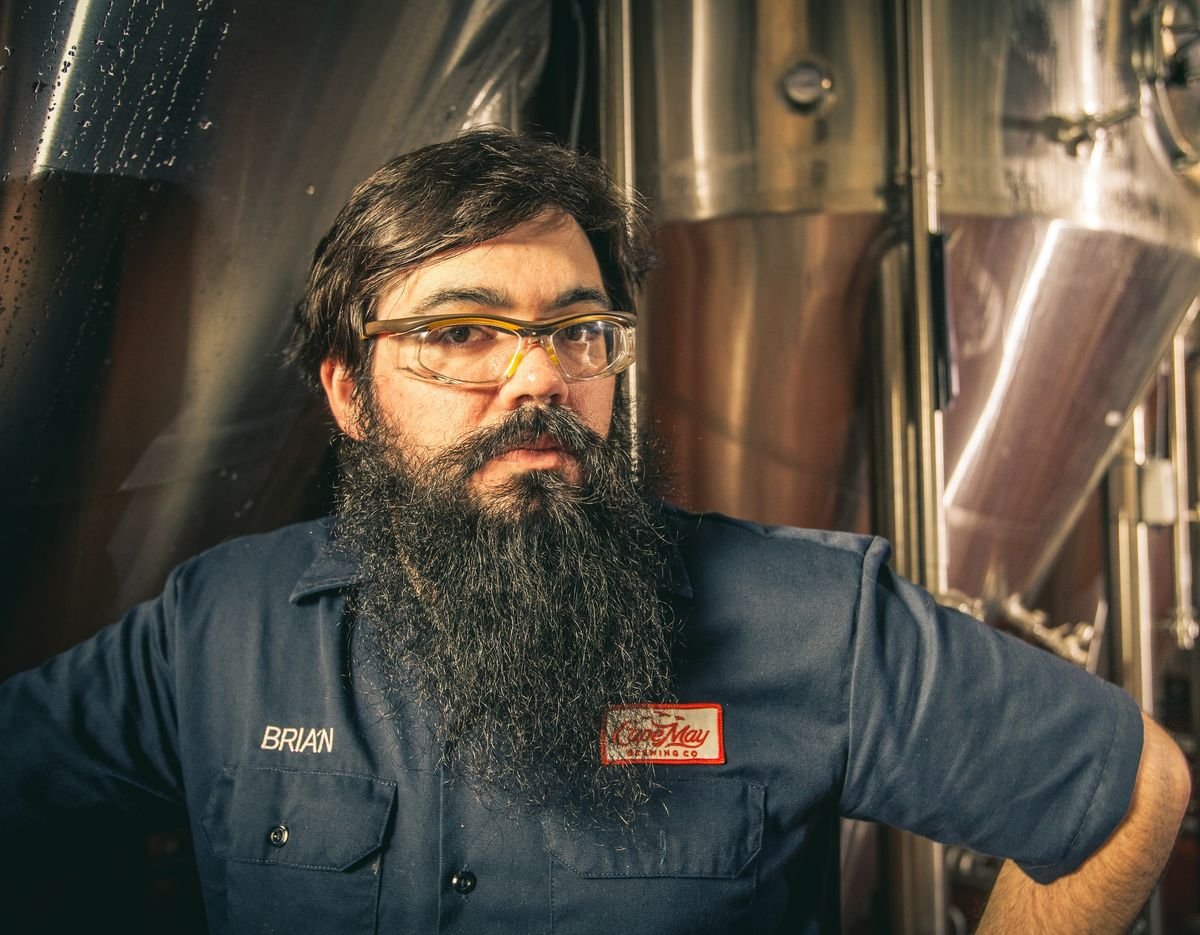
Big Beards in Beer
by Kristen Kuchar
Not all great brewers sport facial hair, but there seems to be a link between craft beer and beards. Take Großen Bart Brewery in Longmont, Colorado for instance. The brewery – its name literally meaning Big Beard in German – is devoted to all types of facial hair. A majority of the brewery’s award-winning beers have beard-related names, including Chin Curtain IPA, Stubble Kölsch, Friendly Mutton Chop Marzen, and Hulihee Irish Ale.
Head Brewer Walter Bourque points out that brewing is a busy and physically demanding job, so since brewers don’t need to shave, many opt not to. “We could spend 10 extra minutes shaving or 10 minutes sleeping before going in,” he says. The brewery hosts a beard competition each year in July, with categories ranging from mustaches to a lady’s category, where participants create a beard to sport out of beer boxes, feathers, yarn and more. There’s also an award for beard of the month, beard oil for sale and a barber who is available every Thursdays for customers to have a pint while they get a trim... CONTINUE READING
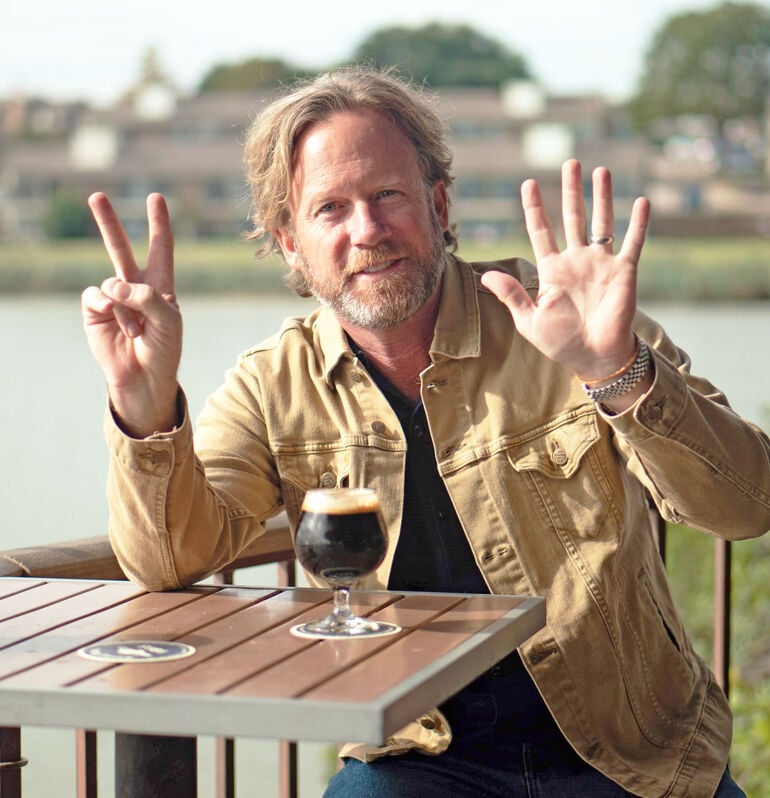
Flying Saucer Celebrates 25 Years of Craft, Food and Fun
by Jessica Zimmer
In June 2020, national “neighborhood pub” Flying Saucer Draught Emporium will celebrate its 25-year anniversary, and in April 2020, Dallas gastropub Meddlesome Moth will celebrate its 10-year anniversary. These innovative restaurants have enhanced awareness about local craft beers from Texas to North Carolina. This year, the Flying Saucer and Meddlesome Moth are planning a slew of special events in honor of the milestones and offering anniversary beer experiences at each location.
Flying Saucer operating partner and Meddlesome Moth co-founder Keith Schlabs said “Beer Knurds,” members of the Flying Saucer’s “UFO Club” of loyal customers, can expect tastings, happy hours, beer festivals and special guest appearances. The restaurants will also hold beer dinners with guest speakers from the Saucer’s and Moth’s favorite breweries. The Flying Saucer restaurants are organizing some events in coordination with craft brewers, including Dogfish Head Brewery founder Sam Calagione and Avery Brewing founder Adam Avery... CONTINUE READING


